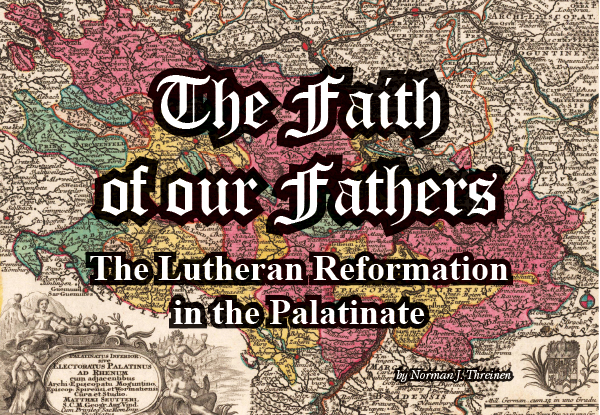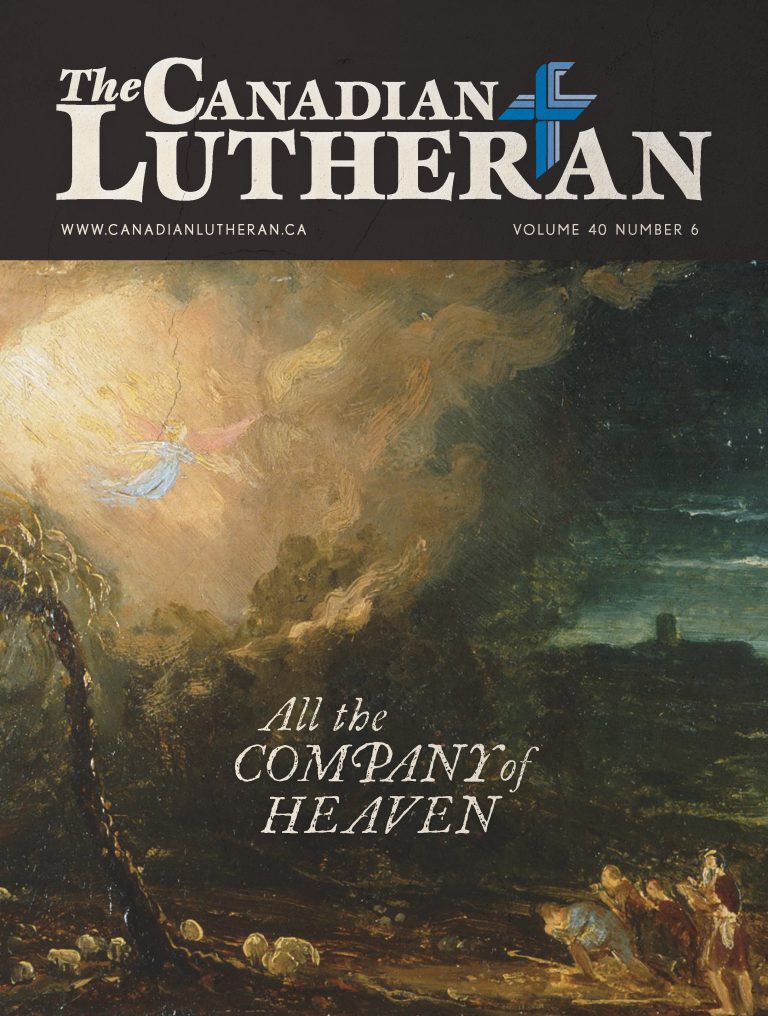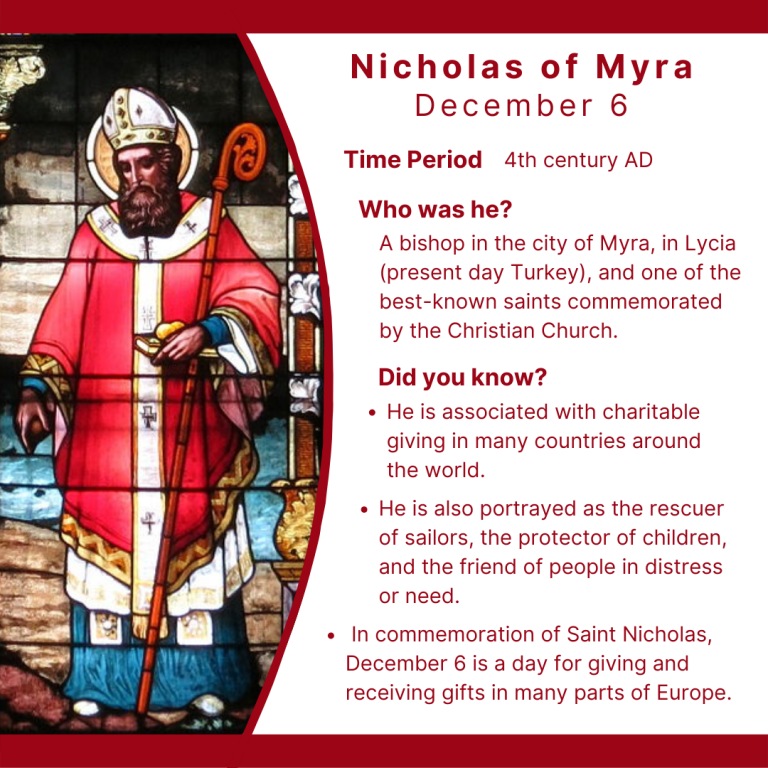The Faith of our Fathers: The Lutheran Reformation in the Palatinate

by Norman J. Threinen
In recognition of the 500th anniversary of the beginning of the Lutheran Reformation, it is appropriate that we focus on the writings of Martin Luther and on the blessings of the Lutheran Reformation. For the Reformation has impacted our identity as Lutherans and informed the way we express our Christian faith still today. With this in mind, it is also of value for us to reflect on how the Lutheran Reformation reached our ancestors—probably humble peasants whose interests were largely limited to the task of raising their families and making a living on their small farms in the Palatinate region of Germany.
The Reformation has impacted our identity as Lutherans and informed the way we express our Christian faith still today.
On October 31, 1517, when Luther nailed the Ninety-Five Theses to the door of the castle church in Wittenberg, he was doing what theologians of the day had often done. He was calling for a theological debate on an issue which was of importance to the church. Since the Theses were drawn up in Latin, Luther evidently expected the debate to take place among theologians. But the Theses were translated into German. They were then printed and distributed throughout Europe. The earlier invention of the printing press brought the message of the Theses to a much broader audience than Luther likely had in mind. It was only because they did so that they provided the spark which ignited the Reformation.
One might conclude falsely that the printing press enabled everyone within Germany and Europe to be impacted by the message of the Theses. This is far from the truth. For, even in translation, the Theses could only reach the people who were able to read—people who had a basic education and normally lived in the cities. The large number of people who lived in small villages in the hill-country of the Upper Palatinate of Germany, for example, would likely never hear about Luther’s Theses. Normally illiterate and focused on their day-to-day existence, they would have continued to go to mass, pray to the saints, and buy indulgences as acts of Catholic piety, totally unaware of the excitement created by the Theses. So, how is it that these people—the ancestors of many of us today—were identified as Lutherans, only a few years later?
The rulers in the Palatinate could not help becoming aware of the Ninety-Five Theses. They would have been present at the Diet of Worms in 1521 when Luther took his stand on the Word of God. They would also have been present at the Diet of Worms in 1530 when the Lutheran princes took a similar stand. Yet, it wasn’t until 1535, when Frederick II, the Count Palatine of the Rhine, married Dorothea, the daughter of the Danish Lutheran King, that a ruler from the Palatinate identified with Lutheranism and introduced it to their people.
In the final analysis, it was Otto Henry, Frederick’s nephew, who identified himself and his land as Lutheran. He did so by joining the Schmalkald League against Emperor Charles V and subscribing to the Augsburg Confession. For his stance, he was banished by the Emperor in 1545. However, upon his return from exile, he actively promoted Lutheranism in the Palatinate, issuing court directives in support of Lutheranism. He also conducted visitations the way Luther had done in Saxony to ensure that the pastors knew and acknowledged the new faith. And he encouraged the fathers in his realm to follow Luther’s admonition to teach the Small Catechism to members of their household. To the extent that this occurred, we can be confident that the doctrine and practice of Lutheranism filtered down to the entire population of the Palatinate. Thus, the people of the Palatinate were brought into the Lutheran fold.
But a challenge to Lutheranism in the Palatinate occurred when Otto Henry died in 1559. Frederick III, who succeeded him as Elector, leaned toward Reformed theology and commissioned his theologians to publish the Heidelberg Catechism to rival and replace Luther’s Small Catechism. He also tried unsuccessfully to replace Lutheran preachers with those who espoused Calvinist theology. His efforts to replace Lutheranism with Reformed theology were only partially successful because they were resisted by a strong popular movement, one led by his own son, Ludwig VI, who eventually succeeded his father as Elector in 1576.
The period following the Schmalkald War was a time of religious controversy within Lutheranism in Germany generally. It ended with the adoption of the Formula of Concord in 1577 and when the Formula, together with other Lutheran Confessional documents, were gathered together in the Book of Concord, Ludwig was one of those who subscribed to it. Whether our ancestors, living in their scattered villages and working on their small farms were aware of the high level theological discussions of the period is doubtful. While some of them may have followed the Heidelberg Catechism, most continued to identify with Luther’s Small Catechism which was included among the Confessions in the Book of Concord. Acceptance of this document was considered to be sufficient to identify them as Lutherans.
The constant warfare and persecution, as well as the limited opportunities facing people in the Palatinate in the seventeenth and eighteenth centuries, led people to seek a better life in the New World. From these migrations, Lutheran churches were established in New York and North Carolina. And when the American Revolution disrupted British shipping to America, Lutherans and others from the Palatinate looked to new territories available for settlement in Eastern Europe. Thus, many people from the Palatinate and other south German territories moved to Galicia, the most eastern province of the Austro-Hungarian Empire. Among the earliest of the German colonies in Galicia were the twin Lutheran villages of Landestreu and Ugartsthal located in the foothills of the Carpathian Mountains. Since no pastors accompanied the colonists, they sustained themselves spiritually by Luther’s Bible and Small Catechism, gathered on Sundays for public worship under the leadership of their lay leaders, and, in their homes, the fathers taught the faith to members of their family using Luther’s Small Catechism.
In time, as land became scarce in the mother colonies, Lutheran daughter colonies were organized elsewhere. Included among the new colonies was Katharinendorf in nearly Bukovina, founded in 1867, the year that the Dominion of Canada came into existence. From this village and others nearby, the first movement of Palatine Lutherans would come to Western Canada twenty-five years later.
Meanwhile, German immigrants, many of them having their roots in the Palatinate, were arriving in eastern Canada. In Pennsylvania, where they had been part of mixed Lutheran and Reformed communities, they had formed religiously mixed congregations. They continued to do so in Southern Ontario. Among them was St. Paul’s congregation in Kitchener. In its early history, the congregation rejected ministers who had no use for Luther or Lutheran practices and, in 1867, it called on Adam Ernst, a pastor of the Missouri Synod, to serve them. Ernst agreed if they would accept him as a Lutheran minister and if they would exclusively use Luther’s Small Catechism. Thus, a Lutheran congregation developed which still exists today.
For all of us, the story of the Lutheran Reformation intersected with the story of our family at some point in time. And for this we thank God.
Not everyone reading this article had ancestors who originated in the Palatinate area of Germany. Some of you may not even have originated in Germany. Yet, for all of us, the story of the Lutheran Reformation intersected with the story of our family at some point in time, whether early in our family’s story or within our own lifetime. And for this we thank God.
———————
Rev. Dr. Norman J. Threinen is Professor Emeritus of Church History at Concordia Lutheran Seminary, Edmonton. He is the author of the recently released book Landesteu, An Odyssey, which chronicles the journey of his ancestors from the Palatinate to Ukraine and finally to Canada where they would become part of the Lutheran congregation in Landestreu, Saskatchewan.



